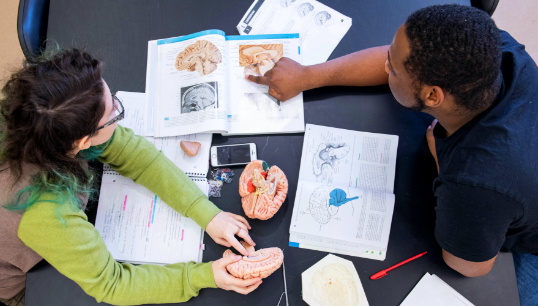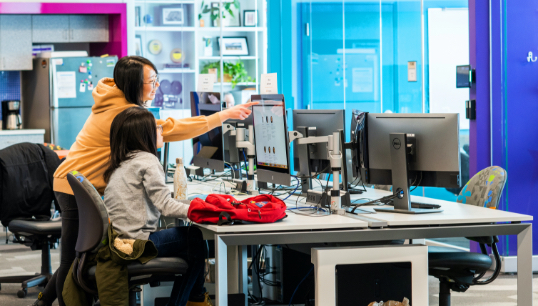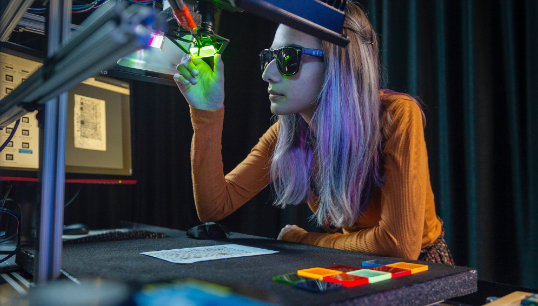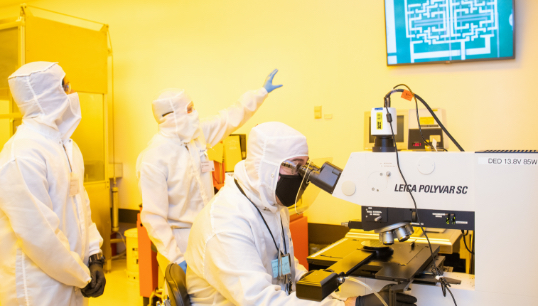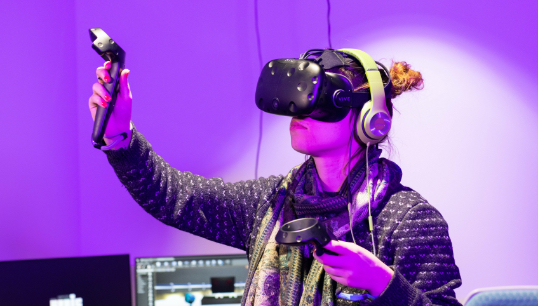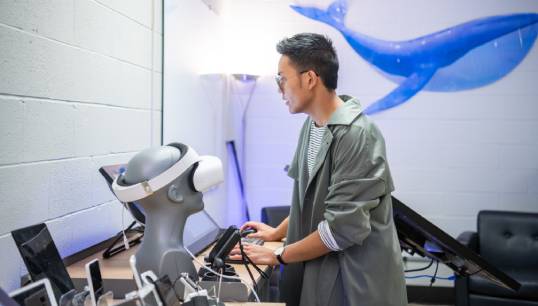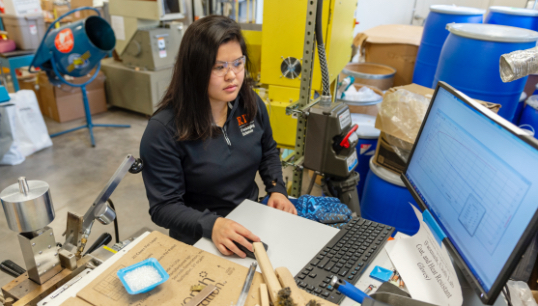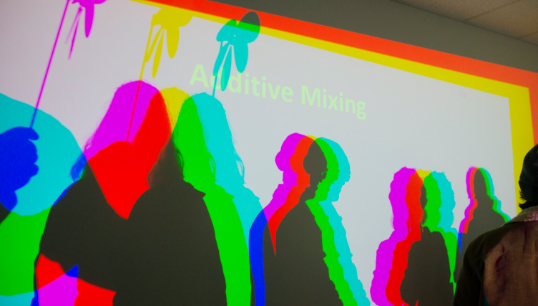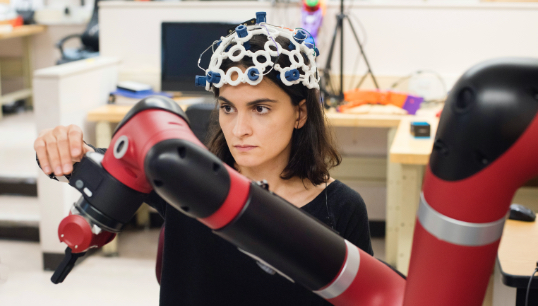New Economy Majors
Technology is driving unprecedented changes in the way we work.
Today’s college grads need to be skilled in analytical thinking and complex problem-solving. They require the creativity, resiliency, and flexibility necessary to adapt to emerging career fields.
It’s time for an education focused on a new economy.
In response to the rapid changes in what’s necessary to be successful in the emerging workforce, RIT has created a new category of academic programs. New Economy Majors are multidisciplinary, transformative, and designed to be future-proof in an evolving work environment.
What Are New Economy Majors?
Graduates need to have the skills to stay continuously relevant and have the flexibility, adaptability, and knowledge that allows them to flex in any direction their field requires. All of these New Economy Majors also incorporate essential tools of team building, effective communication, and leadership.
By combining dynamic areas of study, New Economy Majors break down traditional boundaries and open students up to a whole new world of possibilities. Found between classic majors and those traditionally described as specialized, New Economy Majors are:
Future Focused
By concentrating on high-growth industries and the skills, knowledge, and cooperative education experiences in demand by employers, you're positioned for success in today's evolving economy.
In Demand
With a collective outcomes rate of 94%, these degree programs result in a powerful competitive advantage that leads to high employment post-graduation.
New Economy Majors
Applied Arts and Sciences (Individualized Study)
Engineering + Computing + Design + Business
You may know what you want to do, but you may find yourself drawn to a collection of interests that doesn’t fit neatly into a conventional academic program. Customize a major crafted around your interests, goals, and career aspirations.
Humanities, Computing, and Design
Writing + Computing + Digital Media
Pair a traditional liberal arts education with study in digital technology, human-computer interaction, database management, geographic information technologies, and interactivity in new media. Critically analyze digital culture, social media, and digital games.
Human-Centered Computing
Computing + Psychology + Design
Using computing, psychology, and design you’ll study human behavior to learn how people interact with computers, devices, and technology in order to develop computing systems that are more intuitive for users.
Imaging Science
Engineering + Computer Science + Math
Drones, AR/VR, satellite systems, artificial intelligence, computer vision–this is the incredible world of imaging science where you’ll develop cutting-edge imaging systems to engage with, capture, process, display, and analyze images and imaging data.
Microelectronic Engineering
Engineering + Physics + Nanosciences
Semiconductor and photonic devices impact virtually every aspect of our lives–from communication, entertainment, and transportation to health, solid-state lighting, and solar cells. Understand the design of these amazing devices as you also direct and optimize their fabrication.
Motion Picture Science
Science + Engineering + Film and Animation
Combine science and engineering with film and animation to create captivating storytelling for film, television, and animation. Work for tech and entertainment powerhouses in digital color correction, sound design, digital projection, visual effects, and more.
New Media Interactive Development
Computing + Digital Technologies + Design
Connect computing, digital tech, and design to develop interactive digital technologies for social software, wearable devices, touch interfaces, virtual reality/augmented reality, the internet, and more.
New Media Design
Design + Computing + Digital Media
Explore the dynamic combination of design, computing, and digital media as you create captivating, interactive media through visual design, user experience design, interaction, motion graphics, and more.
Packaging Science
Design + Engineering + Business
Blend design, engineering, and business to craft inventive ways of packaging a range of products–from food and cosmetics to electronics and consumer products–for transportation, storage, display, and presentation.
Photographic Sciences
Photography + Computing + Biomedical Sciences
Pair photography with computing and biomedical sciences for dynamic careers with imaging and camera companies, research centers, forensic laboratories, and government agencies that solve imaging problems and advance photographic technology.
Robotics and Manufacturing Engineering Technology
Engineering + Computing + Robotics
By merging engineering, computing, and robotics, you’ll be positioned for a career in today’s advanced manufacturing environments where robotics, automation, flexible manufacturing systems, and electronics manufacturing are innovating the industry.
Supply Chain Management
Business + Computing + Engineering
Learn to manage the flow of goods and services around the world by understanding the logistics, planning, inventory demands, transportation, and execution behind moving products from farms and production facilities to their final destinations in warehouses and stores.
Outstanding Outcomes
New Economy Majors have a collective outcomes rate of 94%. You'll be employed in a high-demand industry when you graduate.
Future-Proof Careers
There's a lot changing: the realities of an evolving economy, a global pandemic, more disruption caused by automation. Be ready for a future you can adapt to, change with, and eventually lead.
Flexible Skill Set
Build a broad, multidisciplinary skill–analytical thinking, complex problem solving, creativity, resiliency, flexibility–which that enables you to exercise your creativity at every turn.

About RIT
Rochester Institute of Technology is a diverse and collaborative community of curious minds. Beyond our main campus in Rochester, New York, RIT has several international campuses, more than 19,000 students, and more than 135,000 graduates from all 50 states and more than 100 countries.
